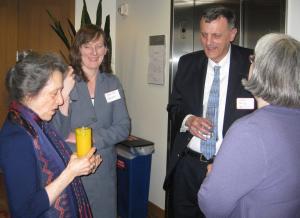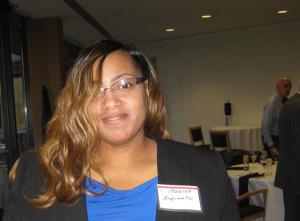Connecticut Academy of Arts and Sciences
Minutes of the CAAS 1443rd Meeting
April 2, 2015
Wesleyan University, Middletown, CT

Joseph Siry, Kenan Professor of the Humanities, Professor of Art History, Wesleyan University.
When the federal government moved from Philadelphia to Washington in 1800, objections to the summer DC climate were so pronounced that suggestions were made repeatedly that the capital be moved north again.
In 1850, as the country grew, it was decided to enlarge the Capitol. Since the House and Senate chambers were enclosed on all four sides by rooms and corridors, there was no way of naturally ventilating these large rooms. Hardly a session of Congress passed without complaints about the heat.
Air conditioning the House and Senate was the first major application of this technology in Washington, where it was otherwise nearly unknown before 1930. Even the White House
Was not air conditioned before the congressional chambers were.
A number of local buildings had refrigeration plants for preserving goods or cooling air for industrial processes like printing but comfort air conditioning did not yet exist in the city.
The first installations at the Capitol, as the symbolic “First Building of the Land” were important for public awareness of air conditioning.
For congressmen, everything was serene and comfortable when legislators were on the floor of either house.
However offices and committee rooms were sweltering.
A newly installed chilled water system changed the norms of the legislature’s calendar just prior to the national emergency of World War 2. Prior to air-conditioning, congress rarely stayed in session for 300 days. Soon after the air-conditioning system first operated, Congress carried its sessions beyond 300 days or about 10 months.
 The installation of the air conditioning did more than cool the Capitol. It prolonged the sessions. The members were no longer in such a hurry to flee Washington in July. The southerners especially had not place to go that was half as comfortable in those days.
The installation of the air conditioning did more than cool the Capitol. It prolonged the sessions. The members were no longer in such a hurry to flee Washington in July. The southerners especially had not place to go that was half as comfortable in those days.
Question and Answer Session
There was considerable discussion of air-conditioning in other DC buildings. Many buildings had their own systems but all depended on cooling from the Anacostia River.
Local demand developed from the success of the government’s program.
The same chilled line system has been used throughout the city.
There was a question regarding the preservation of specimens in the various museum systems prior to air-cooling. Little is know.

Much Congressional legislation spread to other places including Pennsylvania.
Development of polio vaccine was slowed because of a lack of cooling in the laboratories.
Design culture has developed from US standards. But, technology has been exported particularly to Germany. But Germany is dependent of pipelines from the Ukraine thus tying Obama’s hands. However, Germany is trying to become energy sufficient. Germany is ahead of the US.
Minutes by Monica Aspianto, recording secretary